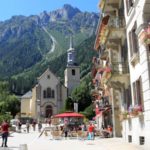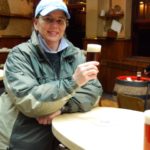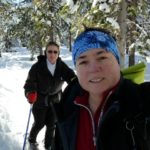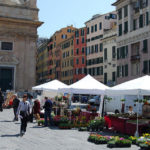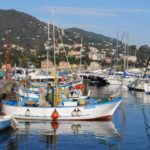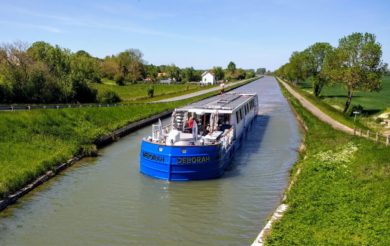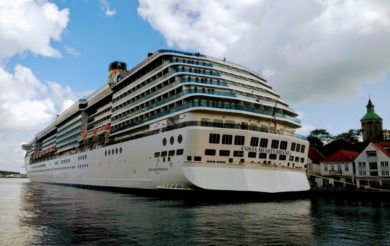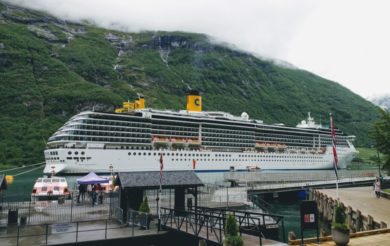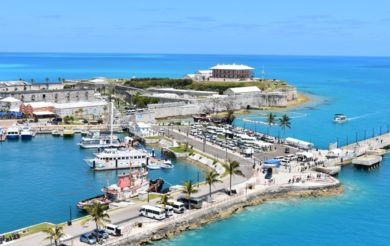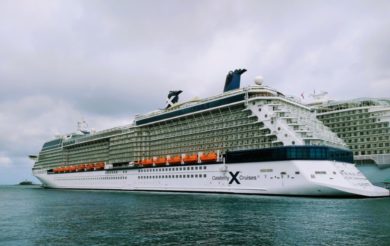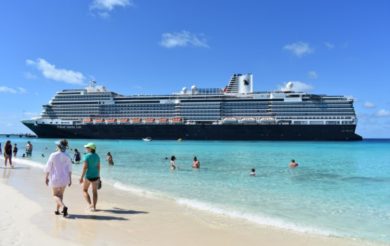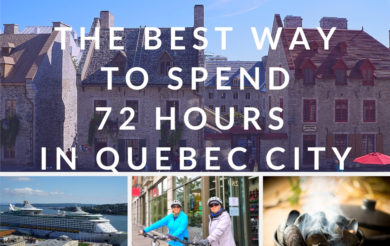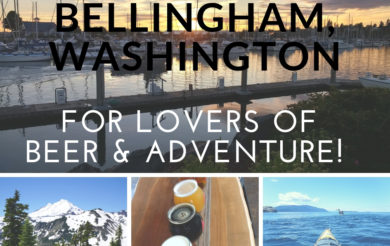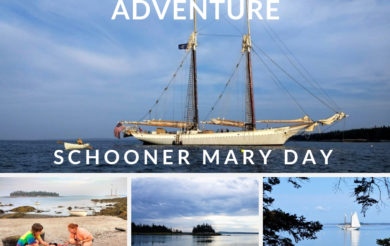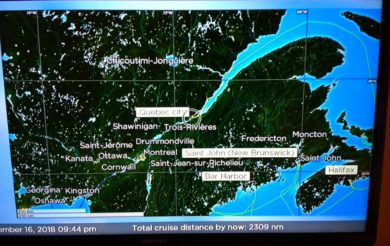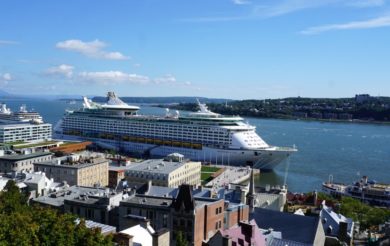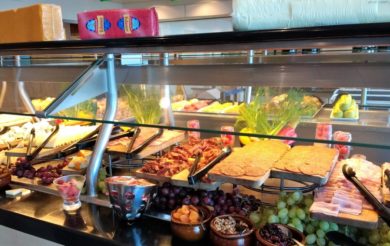Travel Spain – Surfing in San Sebastián
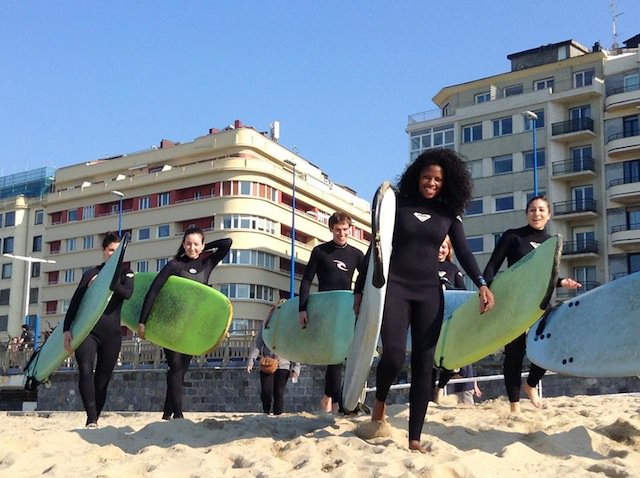
Surfers head for the beach, with the author in the lead. Photo by Nicholas Irving.
Travel Spain – Surfing in San Sebastián
By Jessica Jenkins
Spaniards call the Basque country a surfer’s paradise. The crystal clear water, large swell, and rock-free beaches make surfing in San Sebastián an unforgettable experience.
San Sebastián is one of the world’s best surf towns. Old Town is a quaint community of shops, bars, and restaurants, for locals and tourists to enjoy. After a long day on the water, many surfers go to a pintxos bar to enjoy an afternoon snack. Old Town’s authenticity, narrow streets, and brick buildings are filled with cuisine and nightlife that won’t disappoint. And during the day, the local streets are bustling, with a friendly local community.
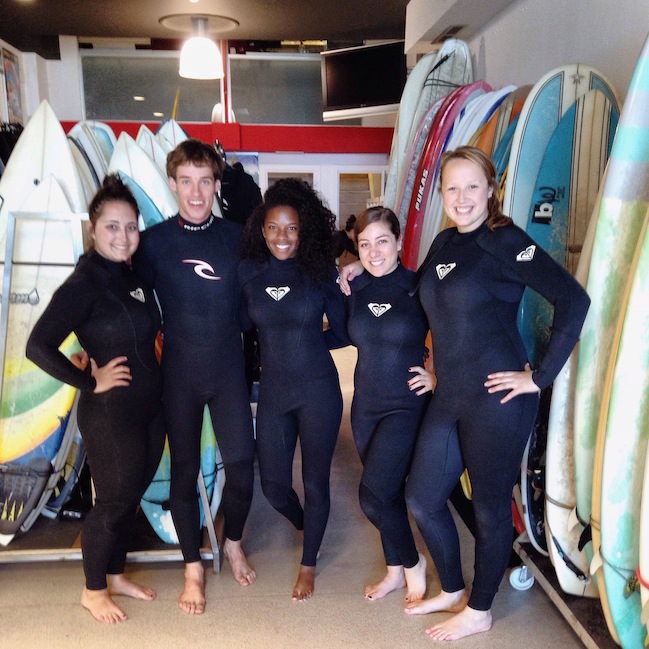
Suited up. Photo by Jessica Jenkins.
San Sebastián is such popular surf destination because there are so many water destinations in the city: the beaches, aquarium, Pukas Surfboards for water sports, and shopping in Old Town. The aquarium offers a beautiful taste of the nature and wild life of the city, with a viewing tunnel you walk through while the aquatic life swims overhead. They also have a touching tank filled with fish, where young ones can get hands-on experience with the Basque fish. The shops of Old Town are about a two minute walk to La Concha bay, where water sports are not frequently practiced, but the shallow and calm waters are perfect for swimming and bathing.
La Concha is often heavily populated by tourists taking leisurely walks around the bay, and enjoying the waterfront view of the urban beach. The bay is calm because it has an enclosed body of water shaped like a shell, hence the name “La Concha [the conch].” While it isn’t known for having the best waves for surfing, its smooth sand and shallow water make it ideal for swimming, and soaking up the sun while laying seaside. Because the water is so shallow, when the tide goes out it limits the amount of space available to beachgoers. During the winter months, there are still many people out there, frolicking in the water and the wakes, and paddling on their boards along the shore.
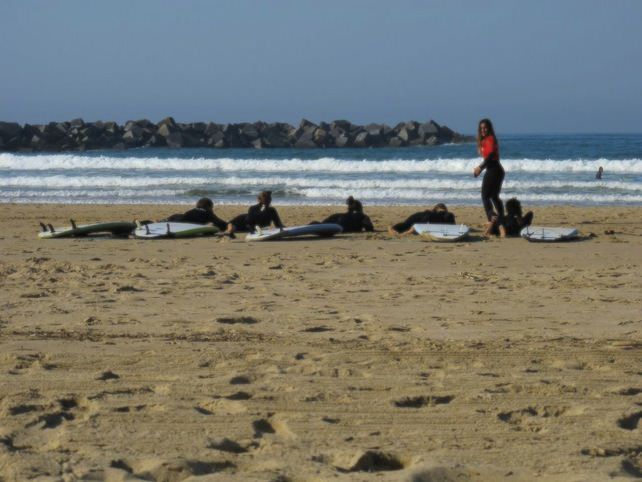
Surfing lesson. Photo by Brittany Nazario.
The most popular surfing spot in all of San Sebastián is La Zurrolias; it’s often called the surfing beach. Along the oceanfront is the boardwalk, with surf shops where tourists can take lessons, and experience Zurrolias first hand.
“During the summer, from May to October we get our best business,” said Pukas Surfboards employee Jaime Blaquez. Because of its surfing school, “Pukas Surfboards” is a well-known surf shop. It cost our group of five about 25 euros [$34] per person for a lesson. On any given day, you will see classes of eager students and instructors on the beach, ready to surf in the Basque country for the first time. During the summer, Zurrolias is filled with just as many locals as tourists. People come from all over the world to surf here.
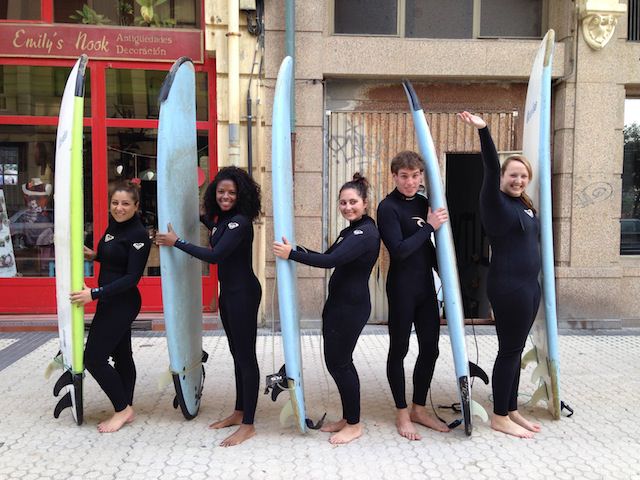
Photo op. Photo by Jessica Jenkins.
“We lose money during the winter some, but mostly the school suffers when we’re out of season,” Blaquez said. Pukas offers group and private surf lessons at hourly rates during the summer and the off season. The shop provides wet suits, a board, and a friendly instructor who will teach you how to ride the swell.
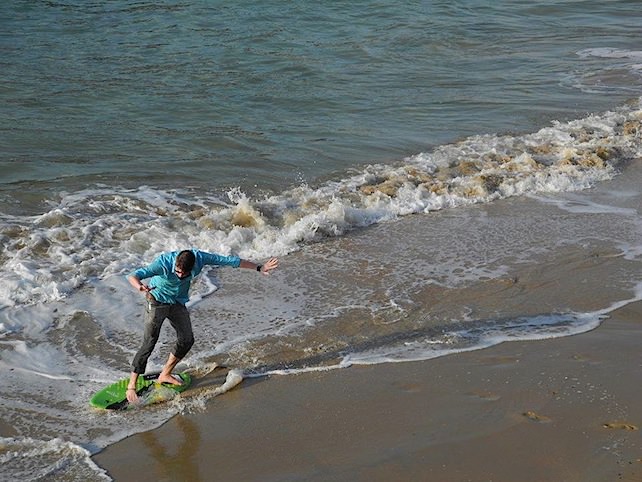
Dry run. Photo by Mary D’Ambrosio.
The classes begin on the beach, where students learn the basic mechanics of paddling and standing up on the board. Then the group hits the water, to try this out. According to Blaquez, the initial investment to begin surfing as a hobby is about 400 euros, for a board and wet suit. After that, its smooth swells into the horizon.
The wet suit feels like your body is wearing a hot sweaty rubber glove that’s squeezing you tight. On the beach under the Basque sun, you start boiling. With sweat dripping underneath the glove, I lay down in the sand, following the instructor’s directions to practice paddling out.
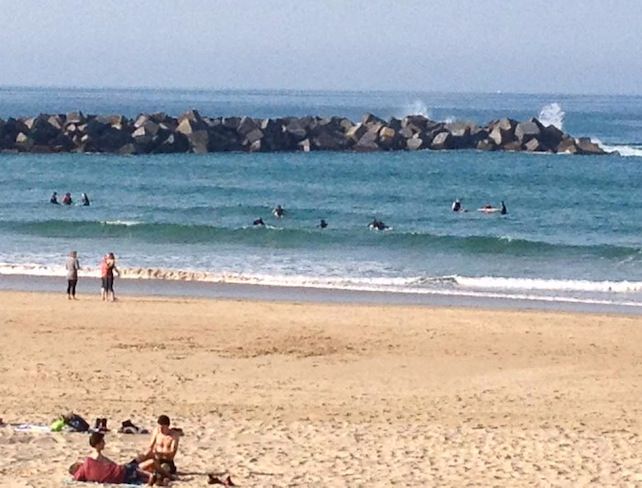
The surfer’s beach La Zurrolias. Photo by Candice Dodd.
Our instructor, Sarah, looked like a surfer, with lightly sun-kissed hair, a lean body, and tan lines from where her wet suit ended at her ankles.
“Paddle until you feel the wave on the back of your board; then pull yourself up,” she yelled to our group. If your right foot is forward on the board, you’re “regular,” but if you feel more comfortable with your left foot forward to balance, then you’re “goofy.” On the shore it was easy; the first step is to paddle as fast and as hard as you can, to gain momentum and to get ahead of the wave. Next, you pull your chest up off the board, straightening your arms to obtain balance. After that comes the more difficult part: to get your feet underneath you, and to try to stand up. If you don’t accurately rotate your hips, ensuring your balance on the board, you’ll go down for sure. After a few repetitions of mounting our boards, it was time to hit the water before high tide ended.
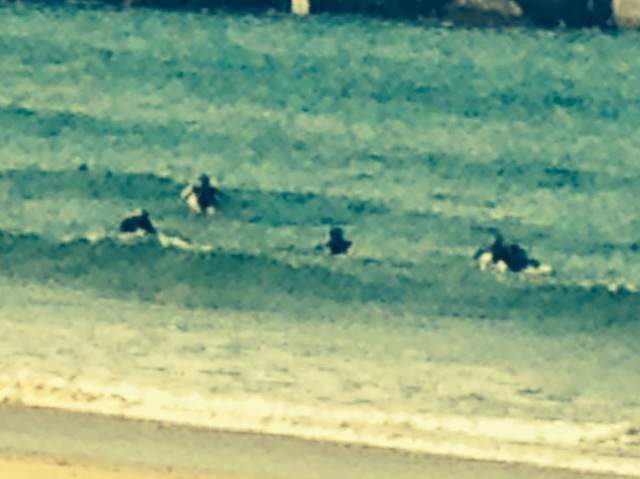
Surf’s up! Photo by Gilbert Gigliotti.
During the winter the water temperature is a chilling 23 c degrees [about 73 Fahrenheit], but with that sauna of a wet suit on, the water felt amazing. I guess the suit was doing its job.
We paddled out past the rocks and waited for a wave to come. Suddenly it was here. I began to paddle, and all I heard from Sarah in a shrieking Basque accent was “harder, faster! faster! UP NOW!”
I paddled fiercely, cupping my hands, trying to grasp the water and propel myself forward to get in front of the wave. I could hear my classmates cheering me on:
“You got it!”
I lifted my chest up off the board and straightened my arms for balance. At that moment the wave came over me and took me under, engulfing me with all its power. The salt water stung my nose, and filled my mouth. It tasted horrible. After being submerged and tossed around, I came up gasping for air. Shaken up a little, but alive and well, I again mounted my board, and paddled out again.
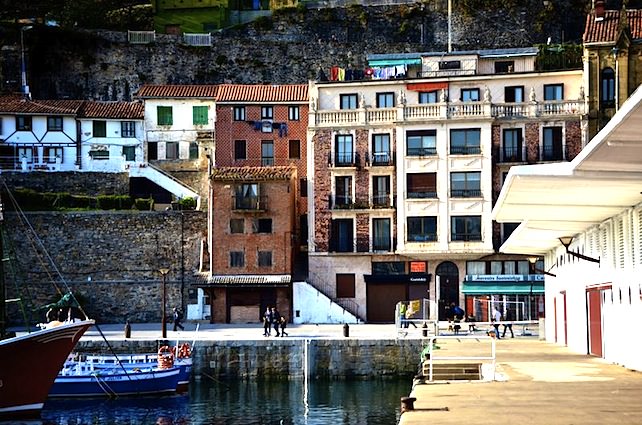
San Sebastian docks. Photo by Katelyn Greene.
The surfing community in San Sebastián is bustling during the summer. “Surfers are known to get angry if you cut in on their wave,” said local surfer Ioana Celayaran, who warned us about how packed it can get on the surfing beach during high season.
In the winter you can still see diehards in their wetsuits out on the water, and the instructors from Pukas. European culture is promoting surfing more, as it is growing as a sport.
“The San Sebastian government is promoting the sport more, because it improves business in the surrounding area,” Celayaran said.
I may have to fight for my wave, and brave Zurrolias’ massive swell, but the unparalleled experience of surfing the Basque country is one I’ll remember for the rest of my life.
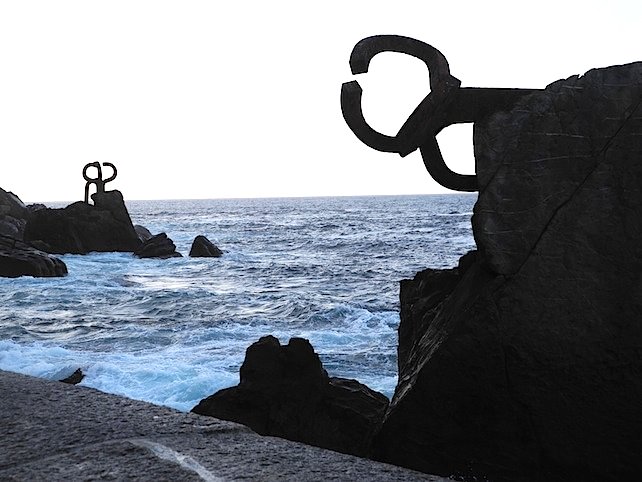
“Wind Comb”, by the sculptor Eduardo Chillida is San Sebastian’s most famous piece of public art. Photo by Mary D’Ambrosio.
BIO
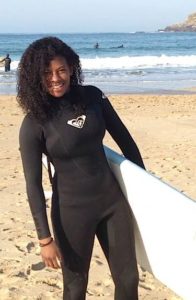
Jessica Jenkins studies communication and journalism at Central Connectiuct State University. Photo by Rachael Guzick.
Jessica Jenkins studies communication and journalism at Central Connecticut State University.

